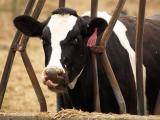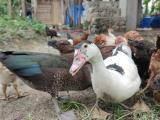Oct 21, 2011
WHO proposes new candidate avian flu vaccine strains, renames 2009 H1N1
Based on a recent analysis of circulating zoonotic avian influenza viruses from Feb 16 through Sep 19, the World Health Organization (WHO) today proposed developing two new candidate vaccine viruses in addition to ones already available, one from the H5N1 subtype and the other from H9N2. The newly proposed H5N1 candidate is based on clade 2.3.4.2 viruses detected in poultry in Bangladesh and Myanmar, the WHO said in its Weekly Epidemiological Record. The viruses from the two countries were similar to each other, but showed reduced reactivity to clade 2.3.4 viruses from which candidate vaccine viruses have already been developed. The WHO said one human H9N2 infection from Bangladesh was detected during the last reporting period, involving a strain similar to H9N2 viruses circulating in the country's poultry, but distinct from those from which candidate vaccine viruses have been developed. As a result, the WHO is proposing development of an influenza A/Bangladesh/0994/2011-like candidate vaccine virus.
In addition, the WHO in the same issue proposed standardizing the nomenclature for the pandemic 2009 H1N1 influenza virus thus: "A(H1N1)pdm09." It said, "This standardization will help to minimize confusion among scientific community and the general public."
Oct 21 WHO Wkly Epidemiol Rec report
Hybrid swine-origin H3N2 flu case confirmed in Maine
A child in Maine has contracted a swine-origin H3N2 influenza virus with components of the 2009 H1N1 pandemic flu strain, according to state health officials. The child became ill early this month with fever, cough, headache, sore throat, and muscle aches and after having contact with pigs, including "time spent in a closed setting at an agricultural fair," according to an alert from the Maine Center for Disease Control and Prevention (Maine CDC). The child was treated by a primary care physician, never needed hospitalization, and has recovered, according to the agency. The alert said, "The type of influenza identified in the Maine case is similar to previous, rare human infections with swine-origin H3N2 viruses, that also contain a genetic component of the pandemic H1N1 virus. This virus is genetically similar to four previous cases identified in the United States this year, three in Pennsylvania and one in Indiana, all of which had exposure to swine." The four previous cases were confirmed by the US Centers for Disease Control and Prevention in September. The Maine CDC said no further cases have been detected in the state, but an investigation is ongoing.
Oct 19 Maine CDC alert
Sep 2 and Sep 6 CIDRAP News stories on earlier cases
UK study finds no increased risk of convulsions in kids after flu vaccine
UK researchers found that neither the 2009 H1N1 pandemic flu vaccine nor the seasonal trivalent influenza vaccine (TIV) caused convulsions in children, but that a second dose of the H1N1 vaccine was associated with a signal of an elevated risk. The team studied data from 2,366 UK children under 10 years old who received at least one dose of flu vaccine and had a combined 3,846 convulsion episodes. The data spanned from May 2000 through April 2010. The investigators found no increase in the incidence rate ratio in the week after vaccination for either the H1N1 vaccine or TIV, but they did note a signal of elevated risk in the first 3 days following a second H1N1 dose, which they say is consistent with findings of increased fever in a clinical trial.
Oct 20 Vaccine abstract



















